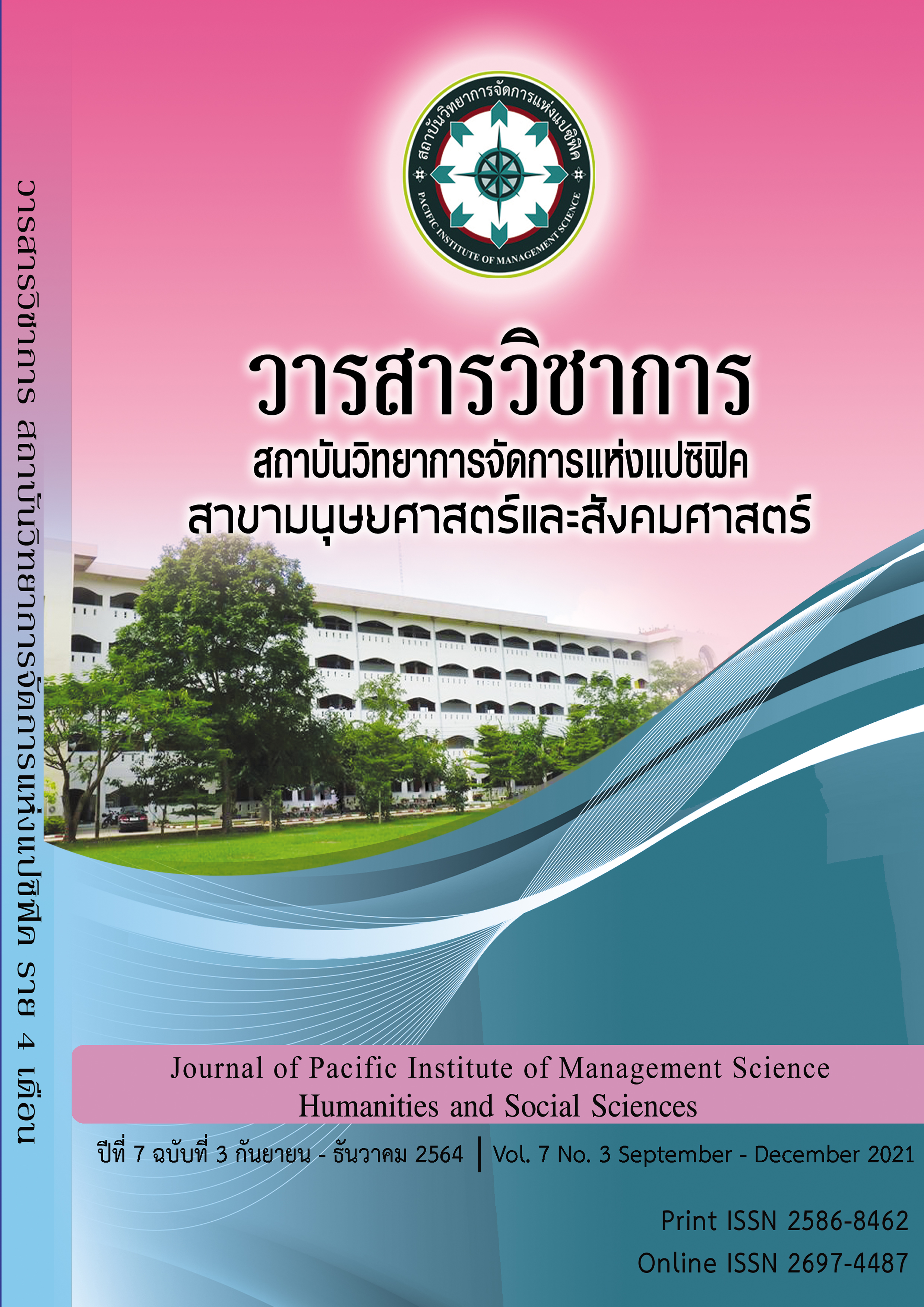Sarasta Xup Laks of Metaphor in Literary of Somdet Phra Buddha Ghosacarn (P.A.Payutto)
Keywords:
Sarasta, Xup Laks conceptual metaphors construction, literatureAbstract
The objectives of this research were (1) to study formatting of metaphorical construction in the literature of Somdet Phra Buddha Gosacarn (P.A.Payutto), and (2) to study the actual essence of the metaphor in the literature of Somdet Phra Buddha Gosacarn (P.A.Payutto).
The findings are as follows.
From In the study of the essence of conceptual metaphors, there were 2 kinds found: (1) Lokiya (Worldly) which means the virtues for social individual laypeople, consisting of moral and ethical principles for living in happily life. One who wants to have a safety and peaceful life should study and practice or follow these principles. There are more topics of these principles to practice, and (2) Lokuttara (Supernormal power) which means the dharma in a higher level for a wise one who himself releases from defilements. It involves meditating or mental practicing to express the truth in the middle way of the Buddhist methods, according to the exact goals of practicing called Upadisesa Nibbana and Anupadisesa Nibbana.
Formatting of metaphorical construction was found that Somdet Phra Buddha Gosacarn (P.A.Payutto) sometimes used the conceptual method to compare the human’s daily life with basic doctrines, and sometimes with practical method. A comparison began from the basic to the higher scale including similarity and dissimilarity, parity and disparity, reasonableness and unreasonableness, and the last to the end.
The additional findings were: he used his real experience as the element in the propagation of the Dharma by adding his opinion and theatrical conceptual method to explain then taking conceptual metaphors to compare clearly. He took the words used in that topic to explain the difficult meaning in each one. Thus, the listener or the reader could understand the topic easily as well.
References
ณัฐพร พานโพธิ์ทองและคณะ, (2549) มองคัทลียาจ๊ะจ๋าจากมุมนักภาษา : เนื้อหาและกลวิธี. กรุงเทพฯ : โครงการเผยแพร่ผลงานวิชาการ คณะอักษรศาสตร์ จุฬาลงกรณ์มหาวิทยาลัย.
พระพรหมคุณาภรณ์. (2538). วินัยเรื่องใหญ่กว่าที่คิด. กรุงเทพมหานคร:สำนักพิมพ์ ผลิธัมม์.
เลคอฟและจอห์นสัน. “(Lakoff and Johnson 1980: 3)”, อ้างในรัชนีย์ญา กลิ่นน้ำอม. (2551). อุปลักษณ์ที่นักการเมืองใช้:การศึกษาตามแนวอรรถศาสตร์ปริชานและวัจนปฏิบัติศาสตร์.ดุษฎีนิพนธ์ สาขาวิชาภาษาไทย อักษรศาสตร์ จุฬาลงกรณ์หาวิทยาลัย.
วุฒินันท์ แก้วจันทร์เกตุ (2555).วิเคราะห์ถ้อยคำอุปลักษณ์เกี่ยวกับกิเลสในภาษาไทย. กรุงเทพฯ: คณะมนุษยศาสตร์ มหาวิทยาลัยธรรมศาสตร์.
ศรีวรา ผาสุขดี. (2558). อุปลักษณ์เชิงมโนทัศน์ใน ชีวิต ตามภาษารัสเซีย ตามแนวภาษาศาสตร์ ปริชาน. คณะมนุษยศาสตร์ มหาวิทยาลัยรามคำแหง.
Downloads
Published
Issue
Section
License
Copyright (c) 2022 Pacific Institute of Management Science

This work is licensed under a Creative Commons Attribution-NonCommercial-NoDerivatives 4.0 International License.
บทความที่ได้รับการตีพิมพ์เป็นลิขสิทธิ์ของ สถาบันวิทยาการจัดการแห่งแปซิฟิค
ข้อความที่ปรากฏในบทความแต่ละเรื่องในวารสารวิชาการเล่มนี้เป็นความคิดเห็นส่วนตัวของผู้เขียนแต่ละท่านไม่เกี่ยวข้องกับสถาบันวิทยาการจัดการแห่งแปซิฟิค และคณาจารย์ท่านอื่นๆในสถาบันฯ แต่อย่างใด ความรับผิดชอบองค์ประกอบทั้งหมดของบทความแต่ละเรื่องเป็นของผู้เขียนแต่ละท่าน หากมีความผิดพลาดใดๆ ผู้เขียนแต่ละท่านจะรับผิดชอบบทความของตนเองแต่ผู้เดียว







